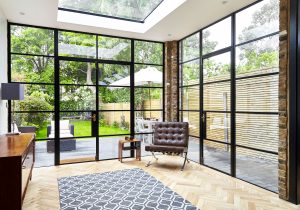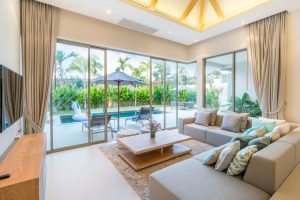Applying Experience to Digital Solutions
Creating software which delivers accurate management of every aspect of window and door production requires a broad range of practical experience, applied to a software solution in a way that still allows it to be flexible and useful. As we learn to help a wider array of customers – like you and many thousands more around the world, we continue to apply our knowledge from the field back into the software, adapting both solutions and implementation strategies for each challenge. It’s a satisfying task, especially when we get to present it all to a new customer who thought that their problems were unique.
Part of that solutioning relates specifically to the materials which go into making window frames. As we all know, every material has different characteristics that make it suitable for various use cases. And these characteristics must be accounted for in the software and implementation we provide.
As a general principle, V6 is suitable for use for all the materials commonly used in the production of windows and doors – aluminum, steel, uPVC, fiberglass, wood, and other composites such as wood-clad aluminum.
Although we treat these all as lineal profiles, steel is very different from aluminum, though both are metals. Wood is a traditional material which has been used in construction since antiquity; making frames from this material is a subtractive process. uPVC is closer to aluminum, but it has its distinctions, too – it is generally heat welded and includes specific twists such as reverse butt welding.
Naturally, the equipment you’re using on your production line is specific to the material from which your windows are fabricated. What isn’t (entirely) specific, is your Soft Tech V6 software, though it is configured to work specifically with your machinery and your raw materials.
1. Steel


Steel typically arrives as a hot-rolled or sometimes brake-folded lineal material, with frames made by cutting these stocklengths as usual. The effect of brake-folding on a profiles is that it has a rounded edge rather than a sharper square edge, but at the same time allows for a wide amount of customization per job. For example, different jamb depths can be accounted for by changing the length of each of the brake ‘legs’. V6 accommodates this with a highly specialized “variable profile” feature, allowing the user to specify parameters which will change the angle and depth of each leg in the profile. This same feature also allows for variable brake metal corner closures, common in the aluminum curtain wall space.
Steel also has specific treatments applied after it’s shaped into the desired window. These treatments include welding, zinc, paint/powder coating. Since it ‘knows’ the surface areas of every piece, V6 serves this information up in the form of material volumes, labor times, and so on. This lets you plan accurately for the required quantities of additional materials for every production run as well as calculation of such items as paint minimum surcharges. And in turn, this means you have at your fingertips a very fine-grained capability for controlling costs down to the last penny – important for effectively managing margins.
Of course, V6 also provides for the inclusion of lock boxes on steel doors, as well as the resulting notched (L- or U-shaped) glass panels which must surround them.
2. Wood


V6 lets you design profiles which will have variable-sized rebates, so you can control the depth of jambs and other factors, and clearly see the final design in both cross-section and elevation.
Because it changes the shapes dynamically, you can adjust one component, with all the rest automatically following. It makes the design of wooden frames fast, simple and accurate. The output helps meet architect demands, giving them the correct cross-sectional and weights of the finished articles – well before actual delivery of said finished article.
3. uPVC


V6 is designed to cope with it all, though, and drives your shop floor as effectively as it does for steel, wood and aluminum. Which brings us to one of the most common materials used for windows today.
4. Aluminum


Since the cost of raw aluminum can vary greatly, it factors that in, including vendor setups and minimum poundage, so you can sharpen the pencil on margins.
Another variation in the aluminum world is rolled (strutted) thermally-broken profiles. V6 treats these correctly as separate components, each capable of having a separate finish before being assembled into a final stock-length for cutting and processing.
As with other materials, V6 again calculates your surface areas for coatings, so you have complete details for job costing and purchasing.
Dealing with different materials and manufacturing processes is a fascinating part of our work at Soft Tech. Creating great software which makes your job easier and more efficient depends on really understanding how windows and doors are made – and then baking that understanding into our solutions. And as things change on your shop floor, be sure to let us know, because we’ll build those details into our software, too.

